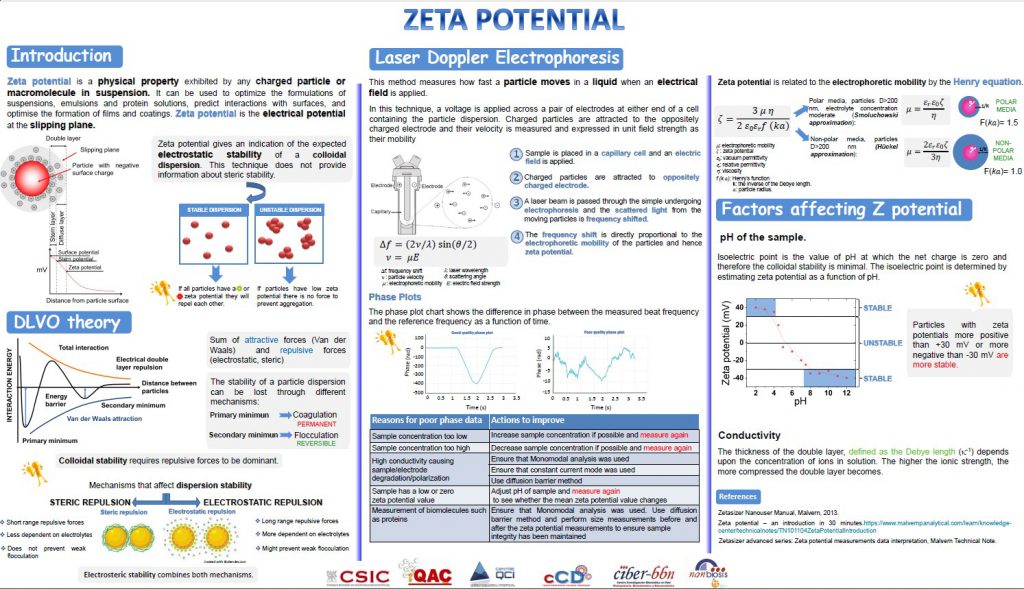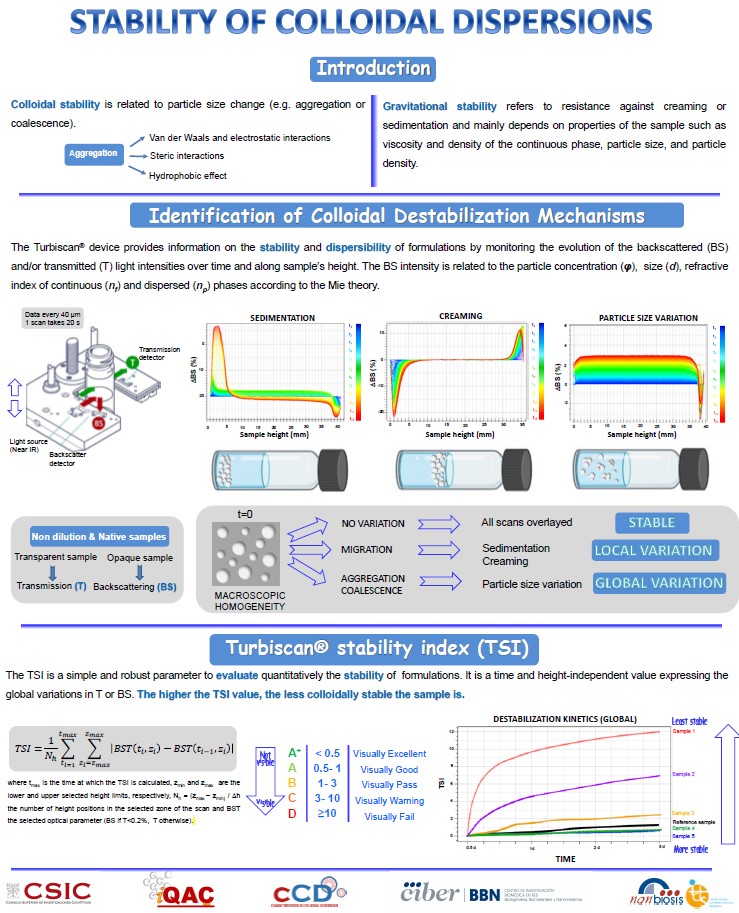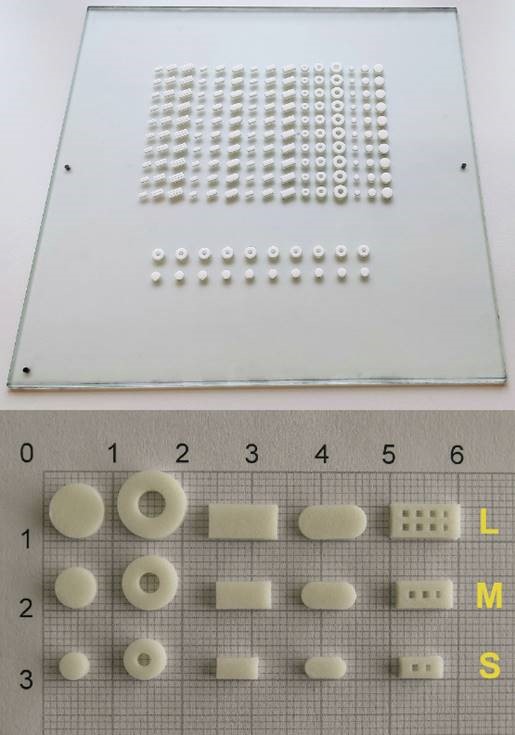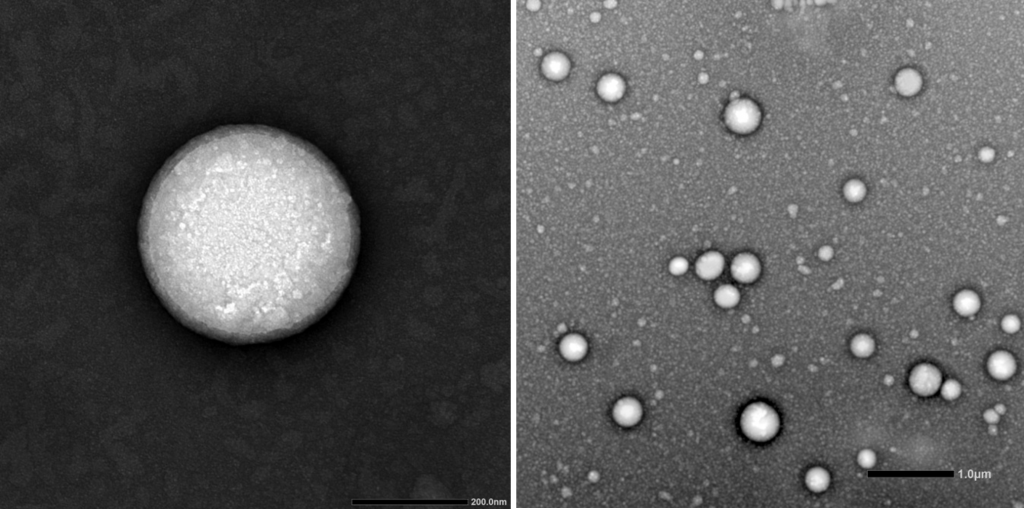U12-S05. Surface and interfacial tensiometry
Surface and interfacial tensiometry
For this service we offer a Sigma 701 force tensiometer (Biolin Scientific) with software for control, acquisition and data treatment for the measurement of surface and interfacial tensions, as well as the automatic determination of critical micellar concentrations. It is equipped with Wilhelmy plate and Du Nouy ring accessories.
We also offer a SITE Spinning Drop Interfacial Tensiometer (Krüss) for determination of liquid-liquid interfacial tensions by the spinning drop method.
Customer benefits
- Specialized in colloidal samples
- ISO9001 certification for standard quality control system
- Highly qualified and continuously trained staff
- Adapted to customers’ needs
The services provided by the unit are very relevant for product formulation and quality control. Applications include surface and interfacial tension measurements of liquid systems. Also determination of ultra-low interfacial tensions (up to 10-5 mN.m-1) in colloidal liquid-liquid biphasic systems at controlled temperature.
Target customer
Public research organizations, academia and industry in the pharmaceutical, chemical, food and cosmetic sectors.
Additional information
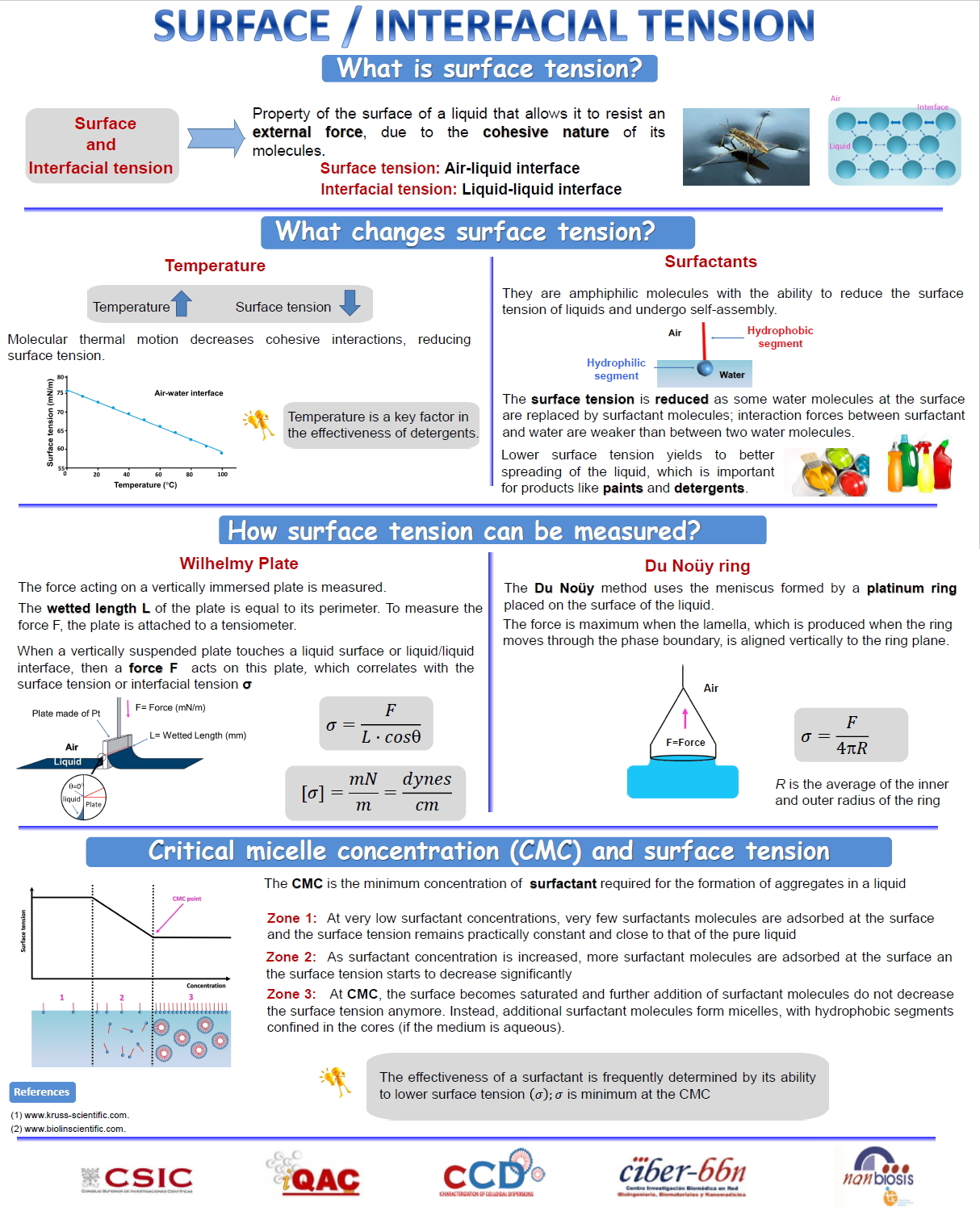
More information can be found at https://www2.iqac.csic.es/qci/









